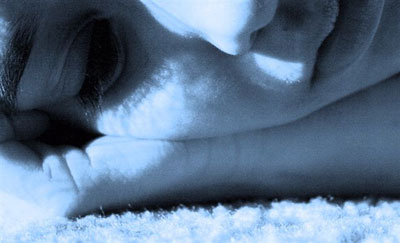All Nonfiction
- Bullying
- Books
- Academic
- Author Interviews
- Celebrity interviews
- College Articles
- College Essays
- Educator of the Year
- Heroes
- Interviews
- Memoir
- Personal Experience
- Sports
- Travel & Culture
All Opinions
- Bullying
- Current Events / Politics
- Discrimination
- Drugs / Alcohol / Smoking
- Entertainment / Celebrities
- Environment
- Love / Relationships
- Movies / Music / TV
- Pop Culture / Trends
- School / College
- Social Issues / Civics
- Spirituality / Religion
- Sports / Hobbies
All Hot Topics
- Bullying
- Community Service
- Environment
- Health
- Letters to the Editor
- Pride & Prejudice
- What Matters
- Back
Summer Guide
- Program Links
- Program Reviews
- Back
College Guide
- College Links
- College Reviews
- College Essays
- College Articles
- Back
Fault Lines: The War Against Dress Codes
What if we lived in a world where we were punished for our bodies? Where we were chastised for deviation from the norm and scolded for celebrating our culture. Don’t waste your time imagining, pick up a school handbook.
Here in the United States we advocate for a dress code that embodies oppressive institutions like sexism, racism and transphobia* that are extensively harmful to many demographics.
Dress codes promote rape culture by unfairly blaming and sexualizing young girls for their developing bodies. Administrators disproportionately prosecute students for breaking the dress code by only writing in rules against biological girls.
In schools certain articles of girls' attire is "prohibited because they 'distract' boys" (Zhou). This biased structure not only sexualizes girls and teaches them that their bodies are only significant for the male gaze but also affects their confidence and sense of self. This body shames them by ¨blaming them for promoting sexual harassment" (Zhou).
School districts need to implement a system to teach boys, (and anyone attracted to the female body as well) to not sexualize their peers and to control their urges--and not teach girls that their body is not their own, but rather an object of desire.
In addition to affecting maturing girls, dress codes also racially target black students. Traditional or natural hairstyles are considered inappropriate for school and students can be sent home for wearing them.
Tiana Parker, a seven-year-old, was sent home from her school in Tulsa Oklahoma for wearing her hair in dreadlocks. A local news station reports that "school officials told (her father) that her hairstyle did not look 'presentable'"(Klein). The school explained that her hair could, "'distract from the respectful and serious atmosphere it strives for'" (Klein). This school district is reaching to say that one girl´s natural and culturally traditional way of wearing her hair is taking away from the environment of the whole school.
Students are allowed to wear styles that mimic natural white people hair which concern undergoing expensive and painful alterations instead of the way they were born.
Dress codes target biological girls, people of color and gender nonconforming students.
Dress codes also promote gender essentialism and strive to limit the freedom of expression of students.
Gender essentialism, according to everydayfeminism.com, is "the idea that men and women have inherent, unique, and natural attributes that qualify them as their separate genders."
Dress codes that implement rules that girls cannot have short hair and boys must credentials that students must fit into one of the two genders that society has established. A senior last week at a high school in Houston was chastised for a wig he wore because it violated the rule for a boy? hair length. In Georgia, a boy was sent home for wearing skinny jeans and makeup.
Dress codes present ideals that girls must be conventionally perceived as attractive while boys should aim for professionalism. Schools need to factor in the variables that clothes and outward image are expressions of gender identity.
Some people might say that dress codes enact a standard of professionalism but as was previously stated, the boys’ dress code does indeed, but the girls’ is based around the sexualization and taboo of the female body.
The dress code should be one single set of values for male, female and gender nonconforming students. A similar argument could be made about the racism of dress codes. Some people might say that dreadlocks or braids or traditional clothing are not professional and do not belong in a workplace, but it is ridiculous to uphold every member of a community to a white/cis/male expectation.
It’s disrespectful and racist to deny a student their expression of their culture. Likewise, it’s uncivil to refuse a student’s right to express their gender identity through clothing as well.
Some day students will pick up their school handbooks with a sense of pride in their bodies and in their culture without the objection of a school district.

Similar Articles
JOIN THE DISCUSSION
This article has 3 comments.

As a teen girl I have experienced being "dress coded" and the shame that comes with it. I wish to alert the public on the intersectional issues that come along with dress codes, and how to combat them.